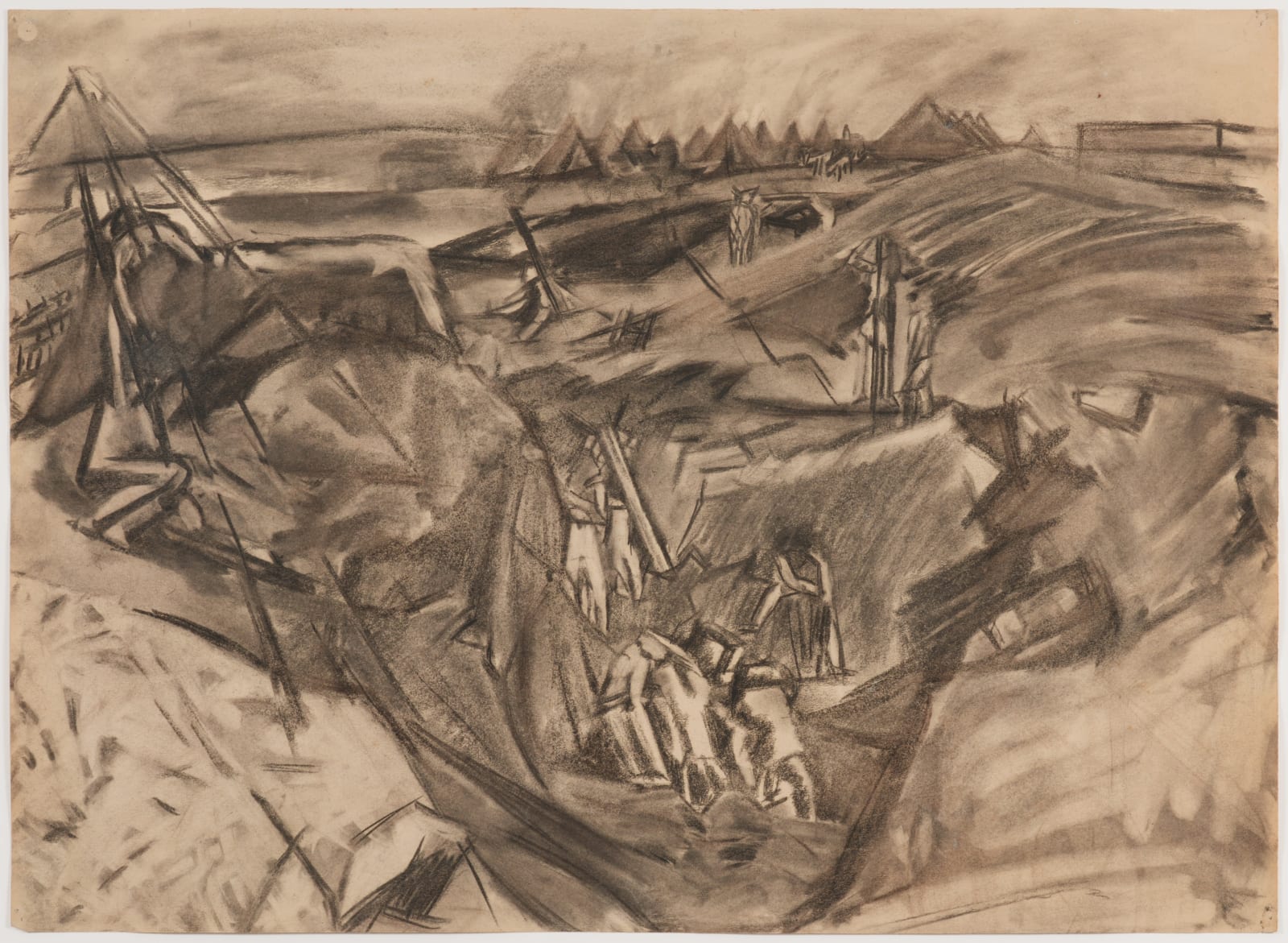David Bomberg
Quarrying, c.1925
Charcoal on paper
20 1/4 x 28 in / 51.5 x 71 cm
The human form has always been a key theme of Bomberg’s artwork, however the 1920s marked a dramatic shift in style from his early beginnings. While studying at the Slade...
The human form has always been a key theme of Bomberg’s artwork, however the 1920s marked a dramatic shift in style from his early beginnings. While studying at the Slade School of Art in 1911, influences of the avant-garde Cubists and Futurists began to shape Bomberg’s practice, creating radical geometric works that was met with opposition from the school. After his expulsion in 1913, Bomberg embraced this style more heavily and aligned with (but not formally joining) Wyndham Lewis’ Vorticist movement. Major works such as ‘The Mud Bath’ created during this time demonstrates Bomberg’s modernist focus on the human figure. Here, he reduces this subject to pure, dynamic abstract shapes, further inspired by the rising urban environment and machinery at the time.
The announcement of war cut short Bomberg’s successes in 1915. He enlisted and served on the Western Front where the horrors of mechanised warfare turned Bomberg’s original fascination and adoration of technology into one of disdain. Having retuned to London, Bomberg began to reduce the harder industrial forms in his work with more natural, rounded shapes to represent the figure, mostly situated within rural settings. Yearning for more creative inspiration, Bomberg travelled to the Middle East with his wife Alice, settling there between 1923 and 1927. He was employed as an official artist, creating works including the ‘Quarrying’ series which explored the relationship between labourers and their environment. Bomberg’s Cubist style is still prevalent in this series. As seen in the present work, the figures blend into the jagged forms of the land, demonstrating the physical struggle and toll of work on the men, as they emerge from the deep quarries they have carved. Executed in charcoal the work takes on an additional natural and earthy quality. Later, Bomberg’s subject matter would develop again: becoming more focussed on the landscape itself with a refreshed palette inspired by the strong light and architecture of the region.
The announcement of war cut short Bomberg’s successes in 1915. He enlisted and served on the Western Front where the horrors of mechanised warfare turned Bomberg’s original fascination and adoration of technology into one of disdain. Having retuned to London, Bomberg began to reduce the harder industrial forms in his work with more natural, rounded shapes to represent the figure, mostly situated within rural settings. Yearning for more creative inspiration, Bomberg travelled to the Middle East with his wife Alice, settling there between 1923 and 1927. He was employed as an official artist, creating works including the ‘Quarrying’ series which explored the relationship between labourers and their environment. Bomberg’s Cubist style is still prevalent in this series. As seen in the present work, the figures blend into the jagged forms of the land, demonstrating the physical struggle and toll of work on the men, as they emerge from the deep quarries they have carved. Executed in charcoal the work takes on an additional natural and earthy quality. Later, Bomberg’s subject matter would develop again: becoming more focussed on the landscape itself with a refreshed palette inspired by the strong light and architecture of the region.
Provenance
Nadine Van Dyk, the artist's granddaughter.Private collection, UK, acquired circa 2015.
